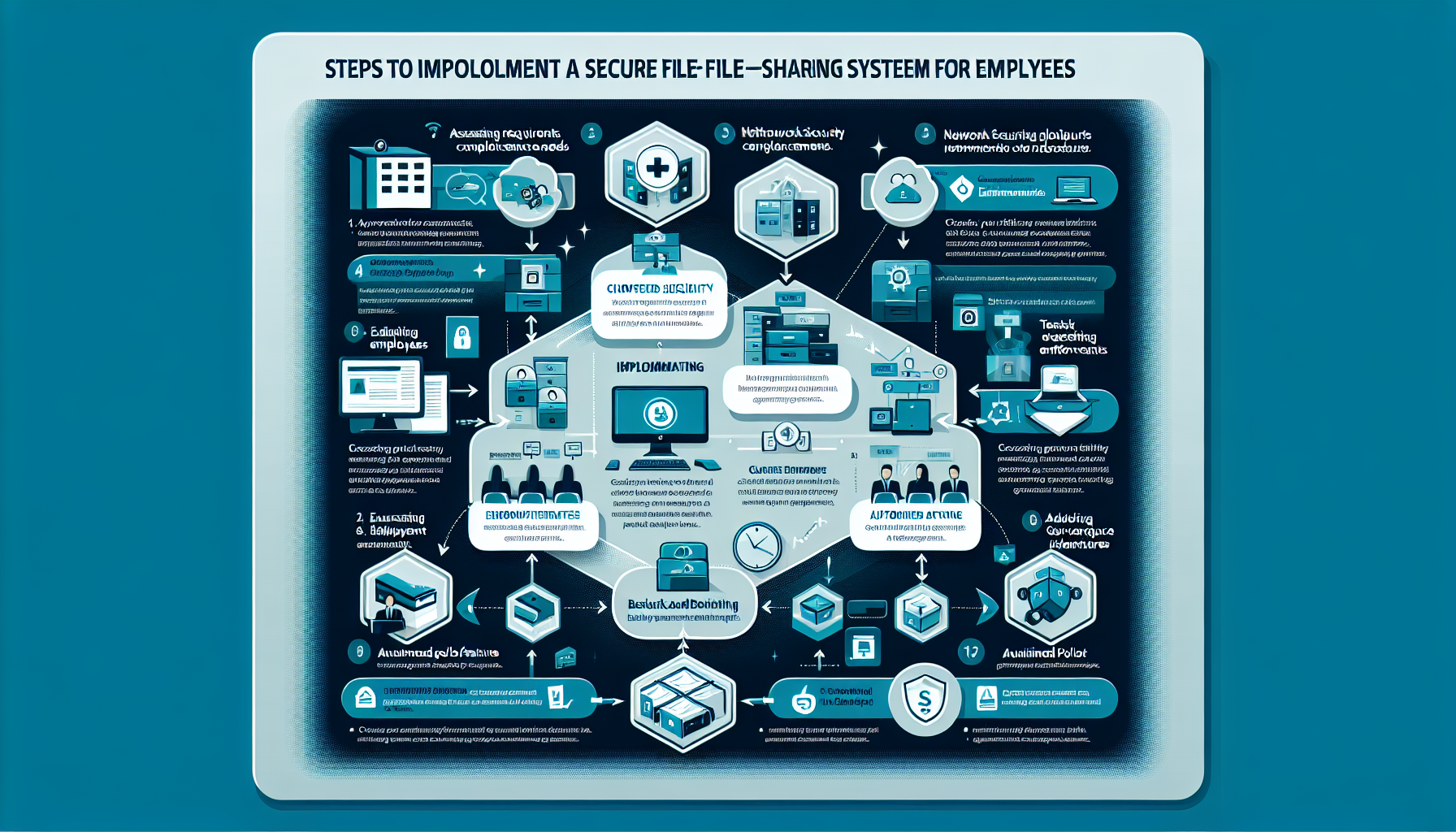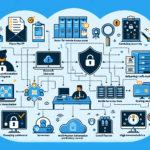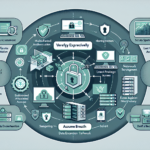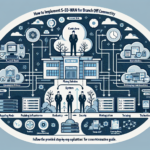Implementing a secure file-sharing system for employees involves a combination of choosing the right technology, applying strong security measures, and enforcing organizational policies. Below is a step-by-step guide tailored to ensure data privacy, security, and compliance:
1. Assess Requirements and Compliance Needs
- Understand the type of data to be shared: Is it sensitive, confidential, or public?
- Identify the user base: Internal employees, remote workers, or external collaborators.
- Compliance regulations: Adhere to industry standards such as GDPR, HIPAA, or PCI DSS, depending on your industry.
2. Choose the Right File-Sharing Platform
- Cloud-based file-sharing platforms:
- Options: Microsoft OneDrive, Google Workspace, Dropbox Business, or Box.
- Ensure the platform offers business-grade security features like encryption and access controls.
- On-premises solutions:
- Use solutions like Nextcloud, SharePoint, or file servers with VPN access for internal sharing.
- These are better for organizations with strict data residency requirements.
- Hybrid solutions:
- Combine cloud and on-premise for flexibility and compliance.
- Secure transfer tools:
- For one-off transfers, use tools like WeTransfer Pro, FileZilla (SFTP), or encrypted email attachments.
3. Implement Security Measures
Data Encryption
- In Transit: Ensure all data transfers use protocols like HTTPS, SFTP, or FTPS.
- At Rest: Use AES-256 encryption for files stored on the platform.
Access Control
- Role-based access: Limit access based on the principle of least privilege.
- Granular permissions: Allow users to define permissions (read-only, edit, or admin).
- Multi-factor authentication (MFA): Enforce MFA for all users accessing the file-sharing system.
Data Loss Prevention (DLP)
- Use DLP tools to monitor and prevent unauthorized data sharing or leaks.
- Configure alerts for suspicious activity, like large file downloads or external sharing.
Audit Logs and Monitoring
- Enable activity logging to track uploads, downloads, and file-sharing activity.
- Regularly review logs to identify anomalies or security breaches.
4. Network Security Enhancements
- VPN: Require VPN access for employees accessing on-premise file-sharing systems remotely.
- Firewalls: Configure firewall rules to allow only legitimate traffic to the file-sharing servers.
- Intrusion detection/prevention (IDS/IPS): Protect against unauthorized access and attacks.
5. Backup and Disaster Recovery
- Implement a backup solution for the file-sharing system to ensure data is not lost due to corruption, accidental deletion, or ransomware.
- Test the recovery process regularly to ensure backups are working.
6. Educate Employees
- Training: Train employees on secure file-sharing best practices, such as:
- Avoiding public Wi-Fi for file transfers.
- Verifying recipients before sharing files.
- Recognizing phishing attempts.
- Security policies: Enforce policies on acceptable use, such as prohibiting the use of personal email or unauthorized platforms for file sharing.
7. Automate Policy Enforcement
- Content scanning: Use tools to scan files for sensitive data (e.g., credit card numbers, PII).
- Expiration dates: Configure shared files to expire after a certain date to prevent indefinite access.
- Watermarking: Apply watermarks to sensitive documents to deter unauthorized sharing.
8. Test and Audit the System
- Regularly conduct penetration testing and security audits to identify vulnerabilities.
- Perform periodic compliance checks to ensure the system meets regulatory requirements.
9. Choose Advanced Features (Optional)
- Integration with existing systems: Ensure the platform integrates with tools like Active Directory, Single Sign-On (SSO), or collaboration tools (e.g., Microsoft Teams, Slack).
- Zero-knowledge encryption: Some platforms like Tresorit offer zero-knowledge encryption, meaning even the provider cannot access your files.
- AI-based threat detection: Use AI tools to detect unusual patterns or potential insider threats.
10. Create a Governance Plan
- Define an escalation process for incidents like data breaches or unauthorized access.
- Assign ownership of the file-sharing system to specific IT personnel for ongoing management and support.
Recommended Solution Architecture
For a medium-sized business with diverse needs:
– Use Microsoft 365 (OneDrive and SharePoint) for cloud-based sharing.
– Implement Azure Information Protection or a similar tool for DLP.
– Provide access to a secure on-premises file server via VPN for files that require stricter control.
For a large enterprise:
– Implement a hybrid solution like Nextcloud Enterprise for on-premise and cloud flexibility.
– Use Kubernetes with object storage (e.g., MinIO, Ceph) for hosting secure file-sharing applications.
– Leverage AI-based monitoring for threat detection and compliance.
By carefully implementing these steps, your organization can ensure a secure, efficient, and compliant file-sharing system for employees while mitigating risks of data breaches.

Ali YAZICI is a Senior IT Infrastructure Manager with 15+ years of enterprise experience. While a recognized expert in datacenter architecture, multi-cloud environments, storage, and advanced data protection and Commvault automation , his current focus is on next-generation datacenter technologies, including NVIDIA GPU architecture, high-performance server virtualization, and implementing AI-driven tools. He shares his practical, hands-on experience and combination of his personal field notes and “Expert-Driven AI.” he use AI tools as an assistant to structure drafts, which he then heavily edit, fact-check, and infuse with my own practical experience, original screenshots , and “in-the-trenches” insights that only a human expert can provide.
If you found this content valuable, [support this ad-free work with a coffee]. Connect with him on [LinkedIn].






